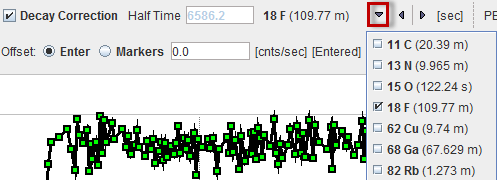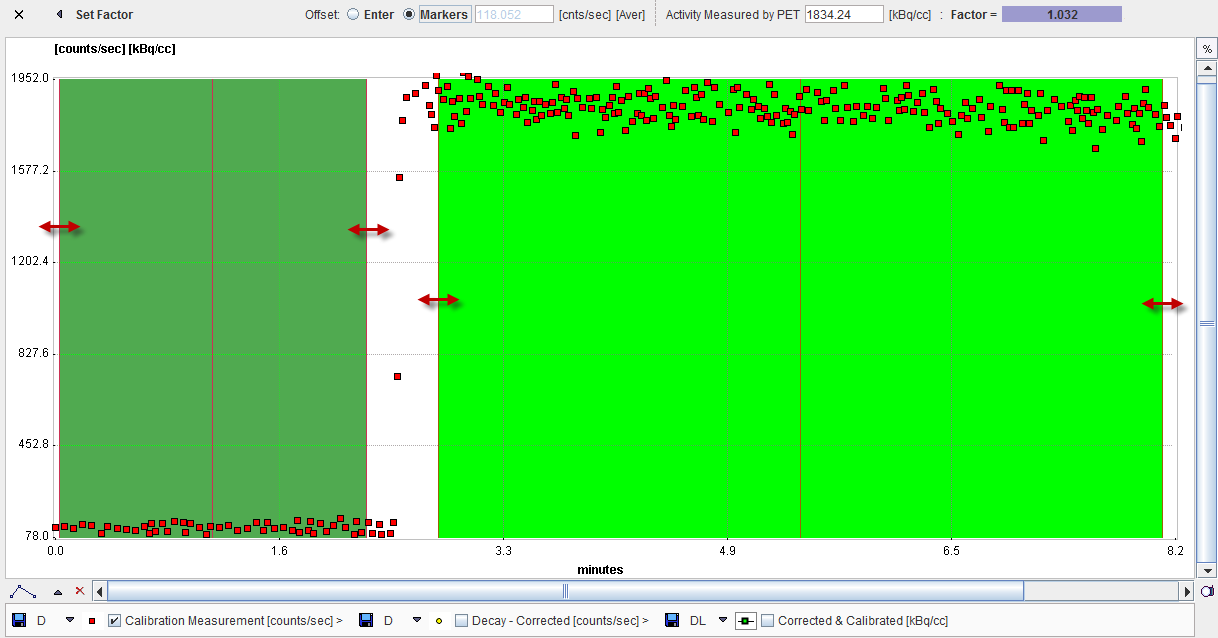Calibration Processing
For calculating the calibration factor start the Twilite Correction module from the PMOD ToolBox.

It has two pages: the Correction page for correcting a live experiment, and the Calibration Factor page for calculating the calibration factor from the calibration experiments. Please proceed as follows:
- Select the Calibration Factor page.
- Load the raw data of the twilite calibration experiment with the Load Calibration TAC button. The coincidence rate during the measurement is displayed in the curve area as Calibration Measurement [counts/sec] with red squares. It should show a level background at the beginning, and a step when the template was inserted into the head.
- Enable the Decay correction and select the appropriate isotope from the selection list.

- The decay correction is applied relative to the start of the twilite acquisition and the corrected data shown as Decay-corrected [counds/sec] with yellow dots.
- There are two ways to subtract the background activity Offset: Enter and Markers. The Markers operation mode is the one to use with the step calibration data. It activates the display of two shaded areas, one in dark green to the left, and another in light green to the right. The dark green area should be placed over the background area for calculating the average background rate, whereas the light green area serves for averaging the signal from the activity (plus background). Therefore, the placement should be as illustrated below:

The area can be placed by dragging the edges, or the center line. - Next, correct the PET Scan Start Time. Initially it is set to the time when the twilite was started, and to which the twilite data is decay corrected. Enter the proper PET start time. The differences between the two starting times will be used to decay correct the twilite data to the time of the PET scan start.

- The last information needed is the Activity Measured by PET. Enter the VOI average determined with the phantom image kBq/cc.
- At this time, the calibration Factor is determined and can be seen in the user interface. It incorporates the following calculations: (1) The average in the background window is subtracted from the Calibration Measurement (red). (2) The resulting signal is decay corrected to the PET scan start (Decay-Corrected, yellow). (3) The Activity Measured by PET is divided by the average of Decay Corrected in the light green signal area.
- Establish the calibration factor of the correction of the live experiment by the Set Factor button.
The Enter Offset mode requires a different calibration experiment. It assumes that the entire acquisition was done with a filled catheter so that the signal average is calculated from the whole data range, and the background is entered numerically. The background can be determined by monitoring the twilite display, or by a separate acquisition without activity.



